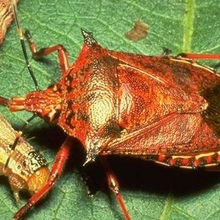Collections for Standard Flower Shows
by Marie Harrison January 29, 2014
National Garden Club Standard Flower Shows offer opportunities to exhibit and compete in many different categories of horticulture and design. In the horticulture division of a flower show, one section might offer an opportunity to exhibit a collection of plants grown by an exhibitor.
As defined by National Garden Club’s Handbook for Flower Shows, 2007 edition, a collection must consist of a minimum of five different cut specimens exhibited in individual containers, five different container-grown plants exhibited in individual containers, or five specimens or sets of fruits, vegetables, or nuts, exhibited on plates, mats, etc.
Specimens within each collection might all be from one family, such as the rose family or the orchid family, or they might be a group of plants that share like characteristics, such as ferns, flowering herbs, or foliage herbs. A collection might consist of different types of species within a genus or different cultivars within a genus or species. It could be much more widely defined, such as five different annuals, biennials, perennials, or sets of fruits, vegetables, or nuts. It could even be five different cut branches of trees and/or shrubs, or five different colors of snapdragons, as shown in the thumbnail.
| |
Notice that in this collection each specimen has a separate entry tag. In the author's opinion, such labelling does not add to the attractiveness of the exhibit. Obviously the panel of judges who judged this exhibit did not agree, for the exhibit was awarded a blue ribbon and a Collector's Showcase Award. |
Exhibiting a collection in a Standard Flower Show is both fun and challenging. Specimens within a collection must not only share some common characteristic, they must also be identified by the currently accepted scientific name. This makes a collection of plants particularly educational for visitors as well as for members of the club, and is, needless to say, one of ‘the challenging aspects of exhibiting a collection.
Several rules apply to collections. For people planning to exhibit a collection, the schedule for the flower show is the first place to look for these rules. The schedule will tell if advanced registration is required. Usually it is, and doing so will ensure that adequate space is provided for your collection. The schedule will tell how many specimens are required for each collection, the minimum number being 5, but the schedule may specify 6, 7, or more specimens per collection.
The schedule will further specify who is to supply containers – especially for cut specimens. Sometimes, for the sake of consistency, the flower show committee will require exhibitors to use provided containers. Other staging may also be provided, such as blocks for elevation of specimens, place mats, or other items to enhance the appearance of the section. If staging is provided by the committee, it must be described in the schedule, and it must be the same for each exhibitor. This staging provided by the committee, however, does not influence judging.
More likely, the exhibitor will provide the containers, and in this case, the appropriateness of the containers will be a part of the judges’ considerations. The containers should be compatible and add to the distinctiveness of the exhibit. They should be clean, unmarked, and as uniform as possible considering variations in specimen sizes. Containers for cut specimens should be transparent, as the stem and all parts of each specimen are considered by the judging panel.
It is important for exhibitors to know what the judges are looking for and what scale of points is used to judge a collection. The most important consideration is cultural perfection, which counts 60 points. Judges will determine cultural perfection based on vigor, typical growth habit or symmetry, substance, size, color, state of maturity, and floriferousness, if applicable. Other considerations are such things as plant identification (5), and educational value (10 points).
Choose the best from among your plants, for the lowest scoring specimen in the exhibit determines the highest possible score for the entire collection. You might have four nearly perfect specimens scoring in the high nineties and one less-than-perfect specimen scoring in the high eighties. Regrettably, the scores are not averaged. The highest a collection with these scores could achieve would be a red ribbon, since a score of 90 or more is necessary for a blue ribbon. The correctly named blue ribbon exhibit with the highest score above 95 may be eligible for the Collector’s Showcase Award, NGC’s top exhibitor award for a collection.
Once the rules and judges’ considerations are understood, it is time for the exhibitor to consider what kind of collection is to be exhibited. Do you have several African violets or other gesneriads, or are you a rosarian? Do you have a collection of orchids, or is your garden filled with ferns of all kinds? Choose what you like best, and assemble your collection. Determine the scientific names of your plants and write them neatly on a placard so that each specimen is easily identified within the grouping. Place them on the staging provided in a manner that shows each specimen in its most appealing pose.
From then on, enjoy the friendly competition of your gardening friends. Show them the best of your best, and enjoy being a part of the educational growth of your gardening friends and the public. After all, growing high quality plants is a goal of all of us who love gardening, and sharing our gardening successes is a part of the joy.




















